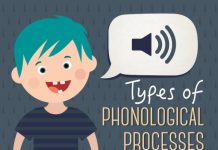Selective mutism is an anxiety disorder that is characterized by an inability to speak in some circumstances or to certain people. Selective mutism is most often seen in children; particularly those who are painfully shy and demonstrate significant social anxiety.
Children with selective mutism do not lack language skills and given the requisite degree of comfort they are able to speak – they will speak to peers but not adults for instance.
The characteristic symptoms of selective mutism are –
 The child may speak in other situations, but may consistently fail to speak in certain specific situations when expected to. This could mean that the child remains silent in school or some other specific situation consistently.
The child may speak in other situations, but may consistently fail to speak in certain specific situations when expected to. This could mean that the child remains silent in school or some other specific situation consistently.- The inability to communicate may mean that the child’s academic performance suffers or that his or her social contacts may suffer.
- If such behavior continues over a period of time exceeding a month, it could be classified as selective mutism.
- Lack of language skills or speech impediment such as stuttering and so on are not reasons for this condition.
- Children may become stiff and awkward in certain situations, to the extent that their body language could also change significantly.
Though the name selective mutism indicates that the child is choosing to behave this way, this is not the case and in most cases the child is constrained by reasons of social anxiety or a crippling shyness, to behave in this way. They may even want to speak but are unable to do so and it is not about the child being willful.
Selective mutism should be differentiated from mere shyness by the fact that the inhibition it imposes may be so severe that it could impede normal functioning and development of a child. Also shyness may fluctuate and once a person develops their coping mechanisms, it may ebb and recede.
One of the problems with selective mutism is that it could be misdiagnosed as an autism spectrum disorder, particularly since the child may be unable to communicate effectively enough with the clinician to facilitate proper diagnosis. A definitive diagnosis is made most often between 3 and 8 years of age or at the time when the child starts regular school.
If you as a parent suspect selective mutism in your child don’t panic. The prognosis of most children with the disorder is good and many go to receive successful treatments and are seen to be greatly improved. For more information visit the selective mutism website.














